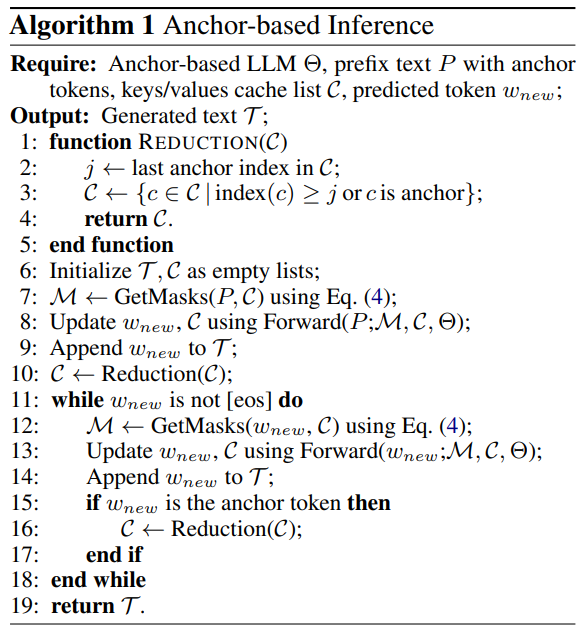and the distribution of digital products.
DM Television
Improving Real-Time Inference with Anchor Tokens
:::info Authors:
(1) Jianhui Pang, from the University of Macau, and work was done when Jianhui Pang and Fanghua Ye were interning at Tencent AI Lab ([email protected]);
(2) Fanghua Ye, University College London, and work was done when Jianhui Pang and Fanghua Ye were interning at Tencent AI Lab ([email protected]);
(3) Derek F. Wong, University of Macau;
(4) Longyue Wang, Tencent AI Lab, and corresponding author.
:::
Table of Links3 Anchor-based Large Language Models
3.2 Anchor-based Self-Attention Networks
4 Experiments and 4.1 Our Implementation
4.2 Data and Training Procedure
7 Conclusion, Limitations, Ethics Statement, and References
3.3 Anchor-based InferenceBy training the model to compress information into the anchor token of a natural language sequence, we can optimize the inference process by modifying the keys/values caching mechanism. Specifically, during inference, upon encountering an anchor token that condenses the comprehensive semantic information of preceding tokens in the current sequence, the model can reduce the keys/values caches by deleting the caches of non-anchor tokens within that sequence.
\ We introduce the inference method in Algorithm 1. The function “REDUCTION” in Line 1 is utilized to remove keys/values caches when the model processes prefix texts in Line 10 or generates an anchor token during the prediction of the next
\

\ token in Line 16. This approach aims to reduce the keys/values caches for both prefix tokens and generated outputs during real-time inference.
\
:::info This paper is available on arxiv under CC BY 4.0 DEED license.
:::
\
- Home
- About Us
- Write For Us / Submit Content
- Advertising And Affiliates
- Feeds And Syndication
- Contact Us
- Login
- Privacy
All Rights Reserved. Copyright , Central Coast Communications, Inc.